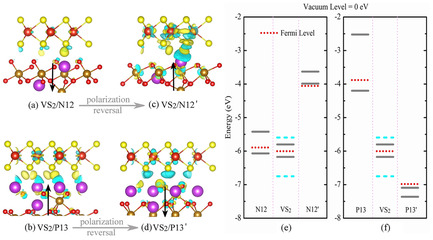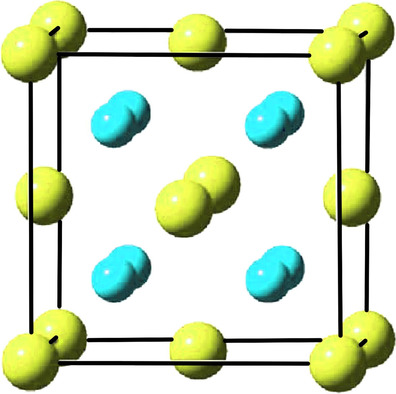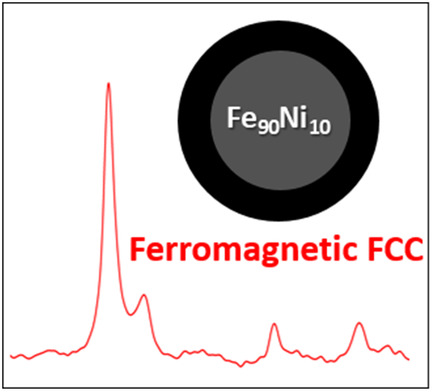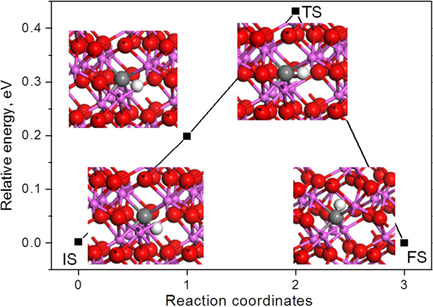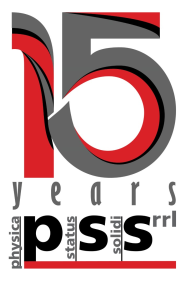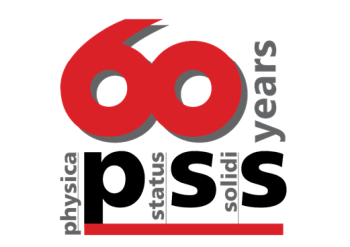Journal list menu
Export Citations
Download PDFs
Cover Picture
Modeling of a Plasmonic Biosensor Based on a Graphene Nanoribbon Superlattice
- First Published: 25 November 2022
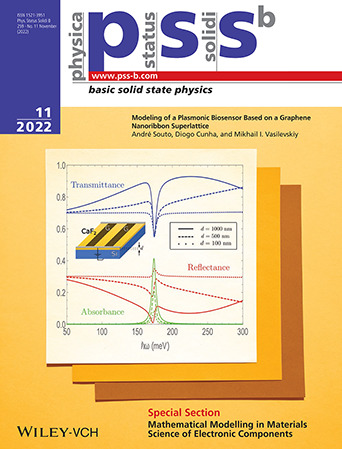
In article number 2200055, André Souto, Diogo Cunha, and Mikhail I. Vasilevskiy present a semi-analytical theoretical model which describes the operation of a selective molecular sensor employing a double resonance between a dipole-active molecular vibration, electrically tunable surface plasmons in a periodic structure of graphene nanoribbons, and the incident light in the terahertz-to-infrared range. The model is based on the solution of Maxwell’s equations for the nanoribbon structure deposited on a dielectric substrate with an additional dielectric layer between the bottom gate and the nanoribbons. The thickness of this layer can be adjusted in order to enhance, via constructive interference, the plasmonic resonance (see figure) and, consequently, the sensing platform–analyte coupling. – This article belongs to the Special Section “Mathematical Modelling in Materials Science of Electronic Components” (see Guest Editorial by Nikolai A. Sobolev and Karine K. Abgaryan, article number 2200505).
Masthead
Back Cover
Deep Insights into Complicated Superdislocation Dissociation and Core Properties of Dislocation in L12-Al3RE Compounds: A Comprehensive First-Principles Study
- First Published: 25 November 2022
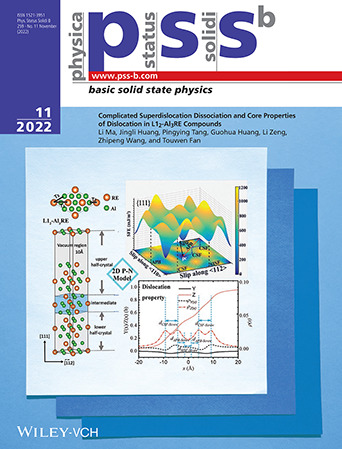
For complex L12 structure alloys, the slip mechanism and the dislocation dissociation modes cannot be accurately described based only on criteria like the unstable and stable stacking-fault energies and their ratio. Further precise investigations are required. In article number 2200211, Zhipeng Wang, Touwen Fan and co-workers apply the 2D Peierls-Nabarro model to simulate the <110>{111} superdislocation dissociation in L12-Al3RE (RE = Er, Tm, Yb, Lu) compounds, revealing three types of dissociation: (i) into two superpartials 1/2<110> (red arrows in top-right image) connecting anti-phase boundary (APB); (ii) four Shockley partials 1/6<112> (blue arrows) corresponding to two complex stacking faults (CSFs) and one APB, and (iii) two super-Shockley partials 1/3<112> (black arrows) bounding superlattice intrinsic stacking fault (SISF).
Research Articles
Modifying the Magnetic and Electronic Properties of Monolayer 2H-VS2 via Ferroelectric Substrate with Different Surface Terminations
- First Published: 15 July 2022
The Effect of Absorber Stoichiometry on the Stability of Widegap (Ag,Cu)(In,Ga)Se2 Solar Cells
- First Published: 20 August 2022

Wide-gap (Ag,Cu)(In,Ga)Se2 solar cells are characterized after storage, dry annealing, and light-soaking treatments. Through variation of the depletion width, these treatments induce highly significant changes in the performance of the cells. The absorber stoichiometry is revealed to play an important role, with moderately off-stoichiometric cells exhibiting large changes in short-circuit current and close-stoichiometric cells suffering from open-circuit voltage losses.
Application of Nomogram Method for the Analysis of Magnetoelectric Interactions in Magnetostrictive–Piezoelectric Composites
- First Published: 20 July 2022
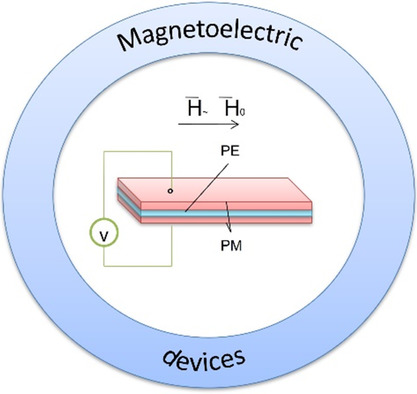
The proposed nomogram method is described in detail for nickel spinel–lead zirconate titanate and Terfenol-D–piezoquartz (X-cut) in the low-frequency range and in the region of electromechanical resonance. The results obtained show that the nomogram method, in contrast to the general method, allows a quicker and easier determination of the magnetoelectric voltage coefficients with considerable accuracy.
Optical Property and Stability of Lead-Free Cs3Sb2Br9 Perovskite Microplatelets Prepared by a Solution Method
- First Published: 22 July 2022
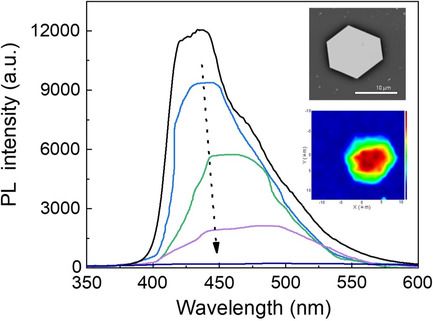
A solution method is developed to synthesize lead-free Cs3Sb2Br9 microplatelets with regular hexagonal shapes, which exhibit photoluminescence at 420 and 600 nm, when excited at 325 and 532 nm, respectively. During storage, the microplatelets significantly degrade meanwhile the photoluminescence quenches due to the intrinsic instability. As a preliminary exploration, oleic acid-capped Cs3Sb2Br9 microplatelets are synthesized to improve the stability.
The Effect of Hydrostatic Pressure on the Martensitic Transformation and Magnetocaloric Effect of MnNi0.88GeV0.12 Alloy
- First Published: 27 July 2022
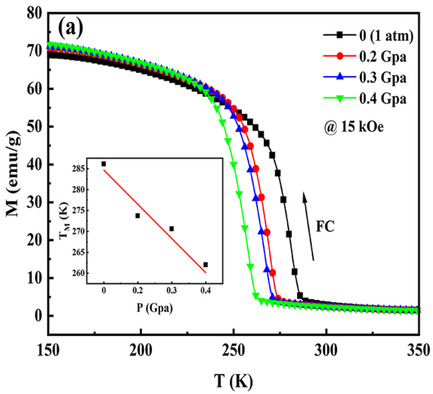
The martensitic transformation and magnetocaloric properties of MnNi0.88GeV0.12 alloy under ambient pressure and external hydrostatic pressure are studied. The measured phase transition temperature of the sample is near room temperature. The applied hydrostatic pressure makes the phase transition temperature of the alloy move to the low-temperature region, and the entropy change value of the sample increases significantly.
Energy Relaxation and Cooling in Impure Bilayer Graphene at Low Temperatures
- First Published: 18 August 2022
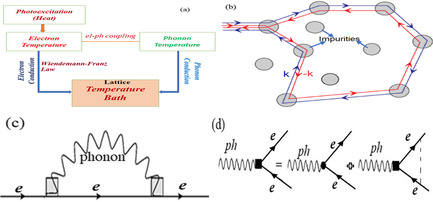
Understanding the physical mechanism of heat dissipation is a matter of increasing concern from the perspective of waste heat management in nanostructure-based devices. The authors investigate the relaxation rate and the cooling power due to acoustic phonon interaction via the deformation potential (including the Thomas–Fermi screening) in disordered bilayer graphene at low temperatures within the impure limit, through the Keldysh technique.
Multiferroic Properties of Pure and Ion-Doped Bulk and Thin Films
- First Published: 14 July 2022
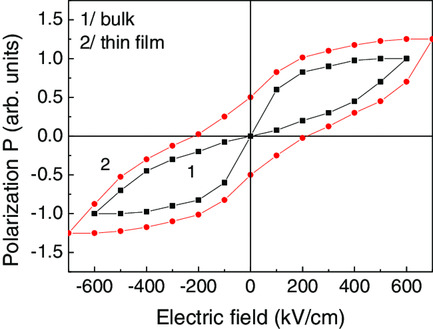
The multiferroic properties of pure and ion-doped BiCrO3, bulk and thin films, are investigated theoretically. It is shown that pure bulk BiCrO3 is antiferromagnetic and antiferroelectric. By doping with Ga, Mn, or Ti ion, there appears ferroelectric polarization P, which increases with increasing ion doping concentration. It is found that BiCrO3 thin films are ferromagnetic and ferroelectric.
Calculations of the Structural, Electronic, Optical, and Elastic Parameters of CdSiX2 (X = P, As) Compounds Based on First-Principles Theory
- First Published: 19 July 2022
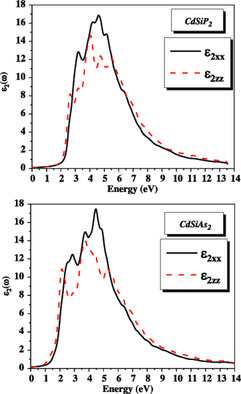
The optical spectra of CdSiP2 and CdSiAs2 display anisotropy in two directions, with a very slight difference in the static limit in the mBJ-approach. Peaks decrease in energy as one moves from P to As. The optical absorption edge is located at ≈1.18 and 0.82 eV for each. CdSiP2 and CdSiAs2 exhibit anisotropic refractive index spectra. The computed optical results indicate that all compounds exhibit optical polarization anisotropy, making them suitable for optoelectronic devices.
First-Principles Study of the 30° and 90° Partial Dislocations in HgTe, CdTe, and Hg0.7Cd0.3Te
- First Published: 17 August 2022
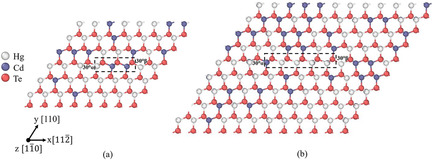
This paper includes work regarding density functional theory (DFT) studies undertaken on the 30° and 90° partial dislocations in HgTe, Hg0.7Cd0.3Te, and CdTe. The results include the dislocation core structures and energies as well as the impact that these dislocations have on the optoelectronic properties through the density of states.
Heat Capacity of Layered Perovskite Compounds: EsBaCuFeO5 (Es = Ho, Gd, and Yb)
- First Published: 28 June 2022
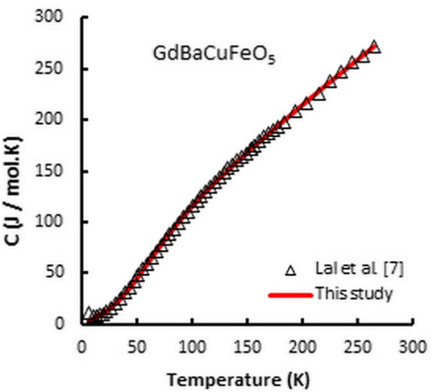
Herein, the heat capacity of GdBaCuFeO5 is calculated by using the fitting equation that consists of the contribution from electronic, Debye and Einstein terms. The results agree well with the available literature data. The deviations observed below 30 K can be eliminated by adding the effect of crystalline electric field on the rare earth ions.
Investigation of X2GaAgCl6 (X = K, Cs) for Optoelectronic Devices: A Density Functional Theory Study
- First Published: 27 September 2022
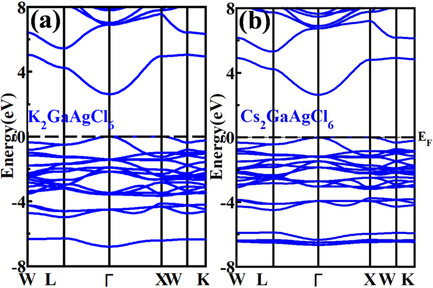
K2GaAgCl6 and Cs2GaAgCl6 reveal a direct bandgap (E g) of 2.57 and 2.63 eV, respectively, at Γ symmetry points. The negative values of formation enthalpy and a value of tolerance factor (τ) close to unity confirm the stable nature of X2GaAgCl6 (X = Cs, K) in cubic phase. The highest peak of optical conductivity is found at 4.74 and 4.93 eV for K2GaAgCl6 and Cs2GaAgCl6, respectively, and the highest absorption at 7.46 and 7.44 eV. Investigation of elastic, structural, and optical properties shows that the compounds X2GaAgCl6 (X = Cs, K) can be potential candidates for optoelectronic applications.
Influence of Multi-Orbitals and Hund's Coupling Induced Pseudogap on Specific Heat Jump in Iron-Pnictide High T c Superconductors
- First Published: 19 August 2022
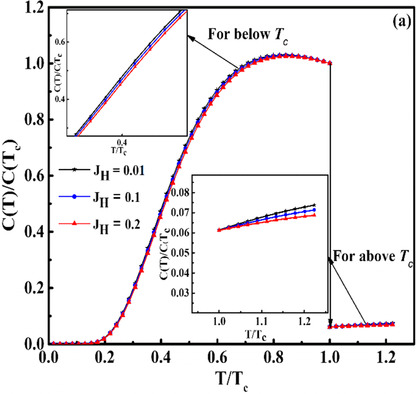
A self-consistent analysis of specific heat in iron-pnictide superconductors is attempted. A pseudogap parameter arising out of multi-orbitals’ Hund's coupling is introduced to investigate the influence of the pseudogap on specific heat (using three-orbital per site model) in iron-pnictide systems like LaOFeAs and hence, it is observed that pseudogap affects specific heat significantly.
The Stability and Electronic and Thermal Transport Properties of New Tl-Based MAX-Phase Compound Ta2TlX (X: C or N)
- First Published: 30 June 2022
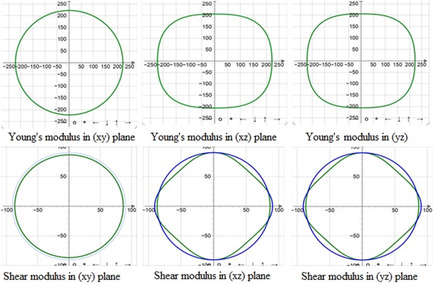
Based on the density functional theory (DFT) calculations, Ta2TlC and Ta2TlN MAX-phase compounds are investigated. The calculated formation energy, phonon dispersion, and elastic constants reveal that these compounds can be synthesized experimentally. From mechanical properties, the studied compounds show distinct mechanical features. In addition, metallic behavior with ionic bonding is found. Furthermore, an interesting low thermal conductivity is obtained for both studied compounds.
Optical Study of Few-Layer Graphene Treated by Oxygen Plasma
- First Published: 07 July 2022
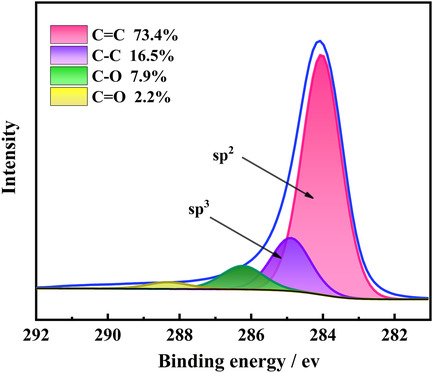
Oxygen plasma treatment is the simplest method for the known graphene energy band modulation process. Herein, oxygen plasma technique is adopted to etch the chemical vapor deposition few-layer graphene film in the low-pressure cavity. The whole process is followed by controlling the time variable to investigate the effect of different etching parameters on the optical properties of few-layer graphene.
Magnetic Properties, Magnetocaloric and Magnetoresistance Effects in Gd5In3 and Tb5In3 Compounds
- First Published: 07 July 2022
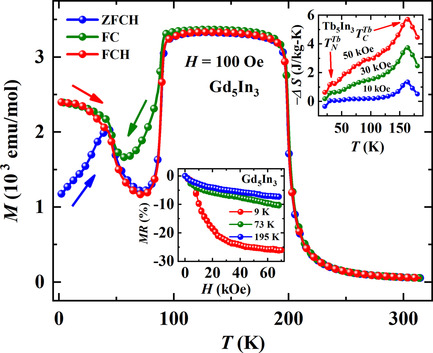
The binary rare-earth-based intermetallics Gd5In3 and Tb5In3 have intriguing magnetic and electronic properties. Both the compounds show multiple magnetic transitions, and are associated with magnetofunctional properties. While Tb5In3 shows moderate magnetocaloric effect at around 160 K, Gd5In3 shows giant negative magnetoresistance below 10 K.
Functional Separation of Energy Transfer and Photon Absorption of Excitons Formed in Circular Nanoantennae
- First Published: 04 August 2022
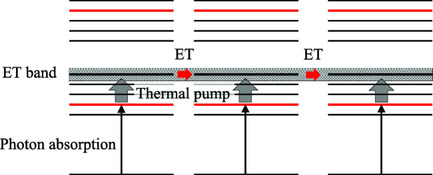
This study proposes an efficient and rapid energy transfer (ET) mechanism only by mimicking the circular structure of natural photosynthetic light-harvesting (LH) antennae, without spatial and energetic disorders as in natural photosynthetic systems. It is shown that the circular structure enables functional separation of LH and ET, as realized in semiconductor optical devices, leading to efficient and rapid ET.
Plasticity Improvement of Mg Alloys with Alloying Atoms (Gd, Y)
- First Published: 18 August 2022
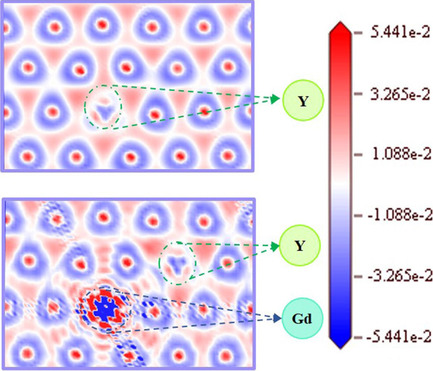
Herein, the influence of alloying atoms (Gd, Y) on the activation probability of basal and nonbasal <a> slip systems is studied. Different from previous reports, the generalized stacking fault energy of Mg–2Gd, Mg–2Y, and Mg–2Gd–2Y (at%) is studied. It is found that Gd is more effective than Y on the improvement of plasticity.
Deep Insights into Complicated Superdislocation Dissociation and Core Properties of Dislocation in L12-Al3RE Compounds: A Comprehensive First-Principles Study
- First Published: 09 August 2022
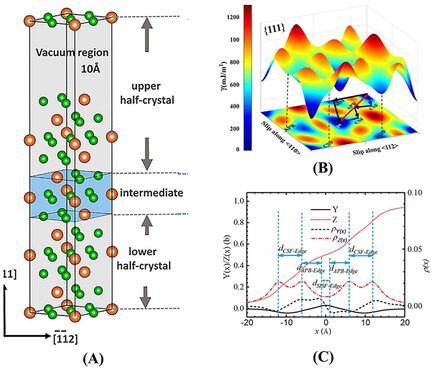
The generalized stacking-fault energy surface (γ-surface) and the ⟨110⟩{111} superdislocation properties of L12-Al3RE (RE = Er, Tm, Yb, Lu) compounds are first investigated. The present study indicates that the combination of the γ-surface and the modified 2D Peierls–Nabarro model can comprehensively elucidate the complex superdislocation properties and deformation mechanisms of L12 structural alloys.
Correlation of Structural, Microstructural, Dielectric, and Impedance Properties in Nd Doping on Bi4Ti2FeO12 Multiferroic Aurivillius Ceramic
- First Published: 24 August 2022

Structural, microscopic, optical, dielectric, ferroelectric, and magnetic properties of Bi4−x Nd x (Ti2Fe)O12 ceramics are studied. The evolution of orthorhombic (up to x = 0.5, further monoclinic structure (with dopant x ≥ 1.0), confirms a structural phase transformation. The optical bandgap increases with dopant substitution whereas ferroelectric hysteresis is retained up to x = 1.0. In conclusion, Nd-substituted Bi4Ti2FeO12 exhibits a good multiferroic character.
Optical Second Harmonic Generation in GaAs/Ga1−xAlxAs Quantum Dots with Screened Kratzer Potential
- First Published: 30 June 2022

The second harmonic generation of spherical quantum dots affected by screened Kratzer potential and regulatory factors is studied theoretically. The results show that the screened Kratzer potential parameters and regulatory factors play a key role in the change of the peak value and position of the second harmonic generation coefficient.
Effects of Hydrogen Incorporation on Mg Diffusion in GaN-Doped with Mg Ions via Ultra-High-Pressure Annealing
- First Published: 06 July 2022

Ion-implanted Mg atoms having a Gaussian-shaped depth profile in GaN are annealed at 1300 °C under ultra-high pressure (UHPA). Hydrogen (H) atoms introduced from the UHPA ambient significantly enhance Mg diffusion by forming diffusive Mg–H complexes, resulting in the diffusion mechanism changing from a simple Mg diffusion to Mg–H diffusion after a certain annealing duration.
Sensing Sub-Surface Strain in GaAsBi(001) Surfaces by Reflectance Anisotropy Spectroscopy
- First Published: 18 August 2022
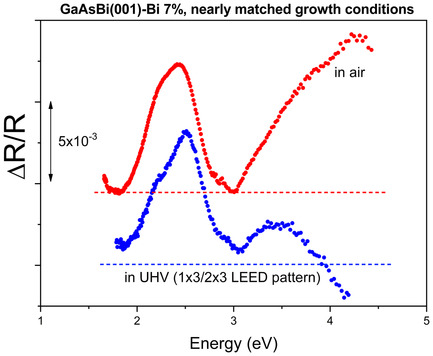
Reflectance anisotropy spectroscopy (RAS) is suitable to investigate the effect of strain on the electronic properties of 2D-layered materials. It enables to follow in real time the optical/electronic properties during the growth of GaAsBi in molecular beam epitaxy (MBE) and metal–organic vapor pressure epitaxy (MOVPE).
Interband Transitions and Critical Points of Single-Crystal Thoria Compared with Urania
- First Published: 10 August 2022
Structural, Degree of Inversion, and Magneton Number Studies on Fe3+-Substituted MAl2O4 (M = Ni, Cu, Zn) Spinel Powders: The Evidence for Local Site Exchange of Cation and Magnetization Increment
- First Published: 28 July 2022
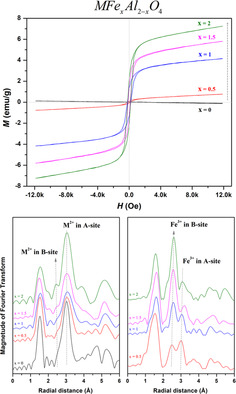
The magnetic hysteresis behavior, local atomic structure, and cation distribution of Fe-substituted metal aluminates, MFe x Al2−x O4 powders (M = Ni2+, Cu2+, and Zn2+) with different Fe3+ ion concentrations (x = 0, 0.5, 1.0, 1.5, and 2), are fully studied using a vibrating sample magnetometer and synchrotron extended X-ray absorption fine structure.
High-Temperature Ferromagnetism of the Iron-Based FCC Phase: The Effect of Carbon and Nickel
- First Published: 04 August 2022
Magnetic Properties of Two-Line Ferrihydrite Nanoparticles
- First Published: 24 August 2022

Two-line ferrihydrite particles are synthesized. Average particle size is 2 nm. Temperature variation of zero-field-cooled and field-cooled susceptibility in 500 G applied magnetic field bifurcates at 50 K. The field-cooled susceptibility below this temperature is almost temperature independent. Magnetization versus applied magnetic field data at 300 K are analyzed considering particle size distribution.
Low Frequency Band Gap and Wave Propagation Properties of a Novel Fractal Hybrid Metamaterial
- First Published: 20 July 2022
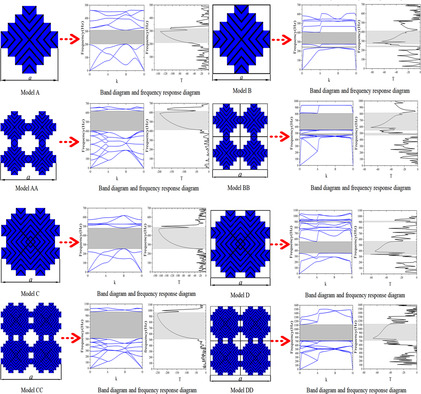
The authors propose a hybrid metamaterial structure with a complete band gap below 500 Hz, which is subjected to second-order fractal, series fusion, and whether the structure is framed or not to form 8 different structures. The complete band gap of its tandem fusion structure accounts for up to 45.502% in the range of 500 Hz.
Luminescence Enhancement of Red-Emitting Sr9MnK(PO4)7 Phosphor via Energy Transfer and Charge Compensation
- First Published: 28 July 2022
The Role of Carbon in the Formation of Intrinsic Point Defects and Hydrogen Migration in α-Al2O3-Based Tritium Permeation Barriers
- First Published: 18 August 2022
Clean and Hydrogen-Adsorbed AlInP(001) Surfaces: Structures and Electronic Properties
- First Published: 10 August 2022
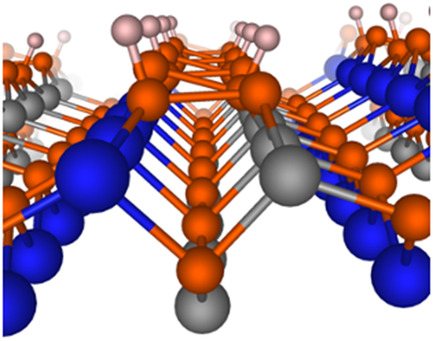
The microscopic structure and electronic properties of AlInP(001) surfaces are explored. Surfaces grown by metal–organic vapor-phase epitaxy are covered with a monolayer of buckled phosphorus dimers, where half of the phosphorus atoms are hydrogen saturated. Depending on the surface preparation conditions, further semiconducting dimer structures as well as metal atomic wires may form.
Special Section: Mathematical Modelling in Materials Science of Electronic Components Guest-Edited by Nikolai A. Sobolev and Karine K. Abgaryan
Guest Editorial
Mathematical Modelling in Materials Science of Electronic Components
- First Published: 25 November 2022
Research Articles
Modeling of a Plasmonic Biosensor Based on a Graphene Nanoribbon Superlattice
- First Published: 11 March 2022
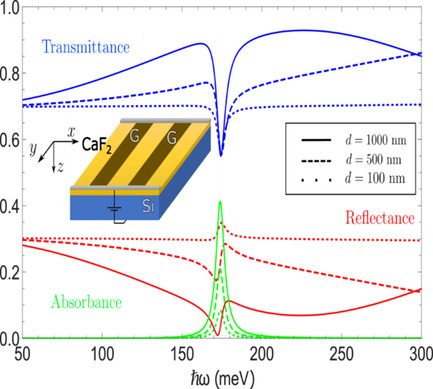
A semi-analytical theoretical model is presented, which describes the operation of a selective molecular sensor employing a double resonance between a dipole-active molecular vibration mode, tunable surface plasmons in a periodic structure of graphene nanoribbons, and the incident light in the terahertz-to-infrared range. The model is applied to two different molecular systems, a protein and an organometallic compound.
Energy-Efficient Photonic Memory Cell with Spatially Separated Recording/Erasing and Readout Channels
- First Published: 23 June 2022
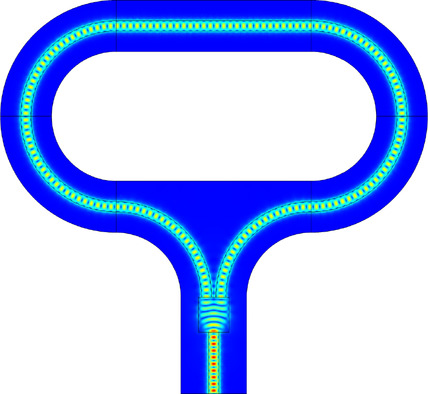
An energy-efficient design of a photonic nonvolatile memory cell based on silicon-on-insulator structure is proposed. Distinctive features of the device are the two spatially separated recording/erasing and readout channels and the usage of the multimode interference loop reflector for more efficient utilization of the guided mode energy during recording/erasing operations.
Monte Carlo Simulation of Alternate Pulsed Epitaxial Growth of GaAs Nanowires
- First Published: 06 April 2022
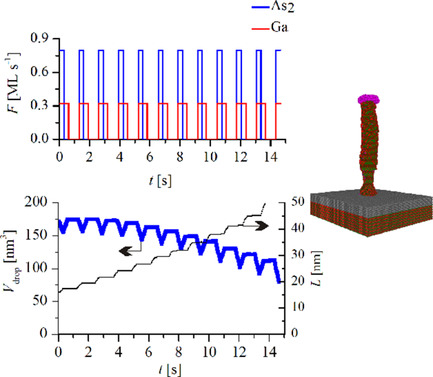
The low-temperature self-catalyzed growth of GaAs nanowires (NWs) by pulsed epitaxy is investigated by Monte Carlo simulation. All of the analyzed pulsed epitaxial regimes result in NW growth prolongation compared with the continuous flux regime. Simulation demonstrates that for long, densely packed NW arrays, readsorption plays a significant role in material mass transfer.
Multiscale Modeling of Ion Dynamics in Memristive Elements
- First Published: 06 September 2022

Herein, a multiscale computational scheme is proposed for ion dynamics simulation in memristive elements. The multiscale approach allows studying conductive filaments formation/destruction in oxide layers on the base of crystal structure and data on the chemical composition of the material. The computational scheme combines quantum mechanical, molecular dynamics modeling, and Monte Carlo simulation taking into account the real crystal structure.
Interval Model of a Memristor Crossbar Network
- First Published: 21 June 2022
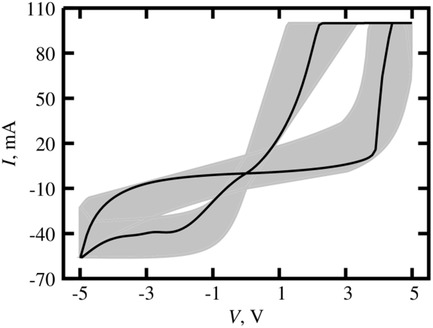
The interval approach is introduced to take into account the stochastic features of memristive elements functioning. The problem of interval parametric identification of a thin-film memristor model is formulated. The interval method is tested on experimental data obtained for the LiNbO3-based memristor. Using the memristor interval model, the operation of an analog self-learning spiking neural network is simulated.





